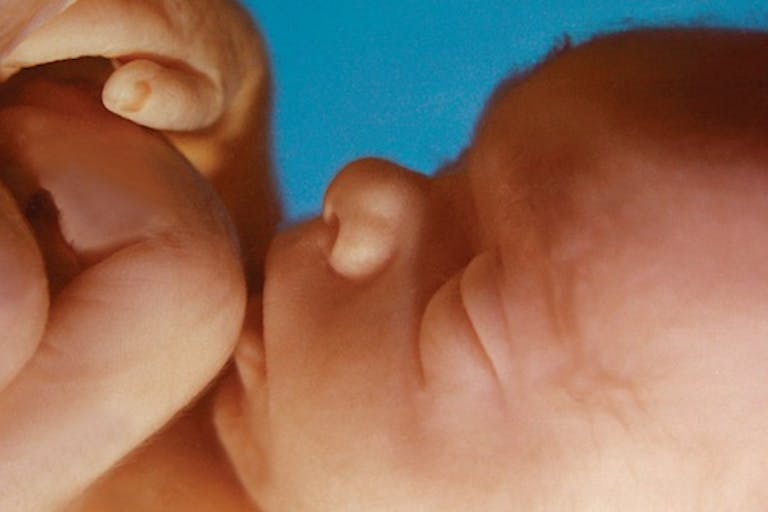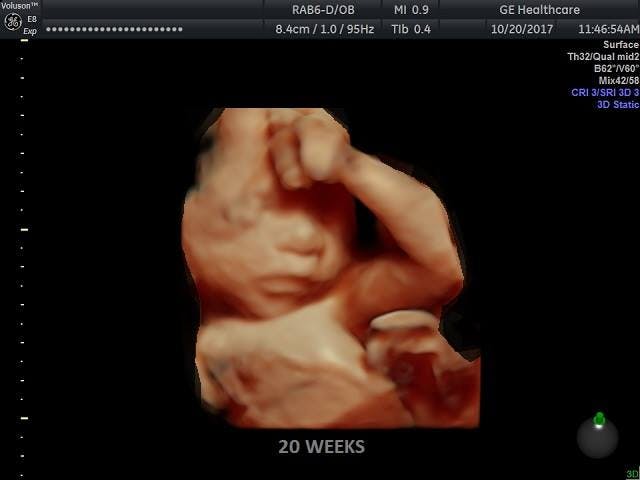
Welsh women denied needed pregnancy medication are getting abortions
Cassy Cooke
·
New study shows many premature babies can survive as early as 22 weeks
Yet another study has proven the tragedy and inhumanity of our nation’s abortion laws. Despite the continual bombardment of claims to the contrary, abortion is barely restricted in the United States. In the huge majority of states, abortion is legal until the very moment of birth.
The ban on partial birth abortion did not end late term abortion; it merely stopped one form of it. Several states have passed “fetal pain laws,” banning abortion when the preborn baby conclusively feels pain. Other states are passing “dismemberment bans,” banning a certain popular form of abortion that literally tears babies apart, limb by limb, piece by piece. Still other states have attempted to pass heartbeat bills, banning abortion once the baby’s heartbeat begins, 22 days after fertilization. (You can watch it here.)
And yet, what our nation so desperately needs is the simple, basic recognition that, from the very moment of creation, every new human being deserves the right to life. The experience of pain does not make us any more alive. A less cruel death is still not humane. And age and level of development should never affect our status as a unique, valuable human being.
The basic right to life should belong to every, single human being. As the Declaration of Independence declared so long ago, we are “created equal,” not born equal.

Despite the great need to recognize preborn children at every stage as valuable human beings, studies about humanity at various ages are still important and educational. They serve to educate the public on the obvious humanity of preborn babies who are often aborted.
“Between-Hospital Variation in Treatment and Outcomes in Extremely Preterm Infants” is a study that was published Wednesday in The New England Journal of Medicine. The study found that, while viability is usually set at 24 weeks, babies born as early as 22 weeks may survive if they are treated.
Sadly, a number of hospitals refuse to treat infants who are born before 24 weeks. And yet, this study found that in hospitals that do treat extremely premature infants, they are surviving. In some cases, they are even thriving, with few or no disabilities or effects as they grow older.
The New York Times describes the results of the study:
Article continues below
Dear Reader,
In 2026, Live Action is heading straight where the battle is fiercest: college campuses.
We have a bold initiative to establish 100 Live Action campus chapters within the next year, and your partnership will make it a success!
Your support today will help train and equip young leaders, bring Live Action’s educational content into academic environments, host on-campus events and debates, and empower students to challenge the pro-abortion status quo with truth and compassion.
Invest in pro-life grassroots outreach and cultural formation with your DOUBLED year-end gift!
The study, involving nearly 5,000 babies born between 22 and 27 weeks gestation, found that 22-week-old babies did not survive without medical intervention. In the 78 cases where active treatment was given, 18 survived, and by the time they were young toddlers, seven of those did not have moderate or severe impairments. Six had serious problems such as blindness, deafness or severe cerebral palsy.

This means that, with “active treatment,” babies born at 22 weeks survive at a 23 percent rate. Nearly 40 percent of the survivors did not have serious disabilities, and only 33 percent of them did. Of course, a child who is blind, deaf, or otherwise disabled deserves to live just as a unimpaired child does.
This study is a stunning and important medical accomplishment. Premature babies should be actively saved. The potential for disabilities or a harrowing time spent in NICU should in no way cheat a child out of her chance for life.
The New York Times also reports that viability (when a baby can survive outside the womb) is a continuing discussion among medical professionals, with many concluding that it should be moved to an earlier age:
Such groups have already been discussing whether it is reasonable to offer parents active medical treatment for babies born at 23 weeks. Some hospitals already do so. A 2014 summary of a workshop that involved the American College of Obstetricians and Gynecologists and the American Academy of Pediatrics said that “in general, those born at 23 weeks of gestation should be considered potentially viable” because more than a quarter of such babies survive when treated intensively.
The discussion on the changing standard of viability also draws attention to the horrors of abortion. While the majority of Americans support banning abortion when a baby could survive outside the womb, Planned Parenthood – and other abortionists – are happy to execute these babies.

Late-term abortion clinics often offer abortions up to 26 weeks for any reason at all, and after 26 weeks for specific reasons.
The abortion industry does not fight to save any baby, and this includes viable babies who are born alive after an abortion. Live Action’s press release, written after an investigation at an Arizona abortion clinic, illustrates the problem:
When asked by the undercover investigator what would happen if the baby were to survive the abortion, Linda, an abortion center counselor, admits they would not help the baby:
Sometimes they are [alive], yeah. But it doesn’t–it doesn’t necessarily mean that it will come out whole. ‘Cause they use suction, plus they use instruments so sometimes the fetuses don’t come out–you know, it’s not complete…
Investigator: But if it does come out whole…I mean, are–will they resuscitate it? Like, will I have to take care of it?
Linda: Uh-uh… No… They do not resuscitate.
“This video is just the latest evidence of a disturbing and horrifying trend occurring inside America’s abortion industry,” said Lila Rose of Live Action. “The horrors of the Kermit Gosnell trial are a widespread problem in this industry. Dismembering and destroying innocent children, leaving born babies to die, injecting poison into the chest of a tiny child so that he slowly dies in his own mother’s womb – this is all standard operating procedure in the abortion industry. But these children are human beings. They have the same basic human rights and deserve the same protections all of us enjoy.”
And indeed, whether viable or not viable yet, every human being deserves the most basic right to life.
To see more of the Inhuman Investigation, go here.
Live Action News is pro-life news and commentary from a pro-life perspective.
Contact editor@liveaction.org for questions, corrections, or if you are seeking permission to reprint any Live Action News content.
Guest Articles: To submit a guest article to Live Action News, email editor@liveaction.org with an attached Word document of 800-1000 words. Please also attach any photos relevant to your submission if applicable. If your submission is accepted for publication, you will be notified within three weeks. Guest articles are not compensated (see our Open License Agreement). Thank you for your interest in Live Action News!

Cassy Cooke
·
Issues
Bridget Sielicki
·
Issues
Nancy Flanders
·
Politics
Bridget Sielicki
·
Issues
Sheena Rodriguez
·
Guest Column
Right to Life UK
·
Newsbreak
Kristi Burton Brown
·
Newsbreak
Kristi Burton Brown
·
Issues
Kristi Burton Brown
·
Newsbreak
Kristi Burton Brown
·
Newsbreak
Kristi Burton Brown
·